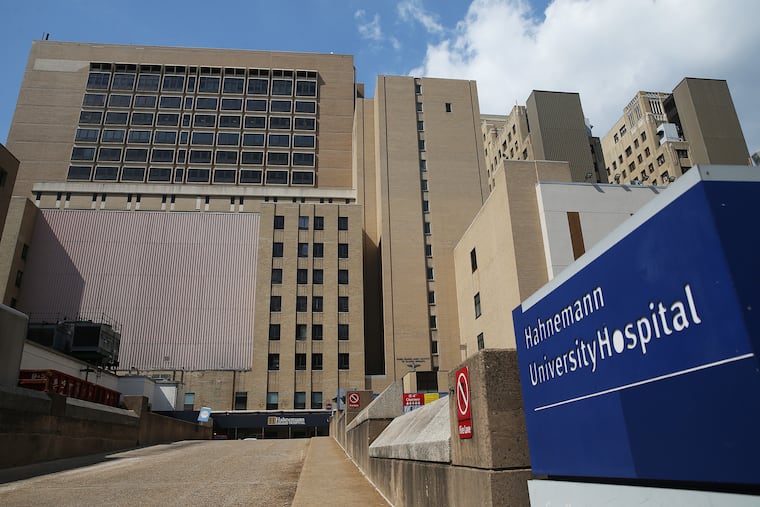Life sciences labs slated for part of former Hahnemann Hospital complex
New owners of part of the Hahnemann complex hope to tap in to surging demand for research and development laboratories.

Iron Stone Real Estate Partners, which recently acquired part of the former Hahnemann University Hospital complex, plans to offer one of the buildings as research and development laboratories for the Philadelphia region’s growing life sciences sector.
The Hahnemann structure Iron Stone selected for labs had housed Hahnemann’s in-house labs. That gives it an advantage over the many proposed conversions of offices to life-sciences labs in the city because it will be less expensive to get ready for a tenant, Jason Friedland, an Iron Stone partner, said this week.
“We can customize it any way anyone wants, so we’ll see what kind of demand there actually is out there,” Friedland said. Iron Stone is renaming the 120,000-square-foot former Bobst building Race Street Labs because that’s where the access is.
Iron Stone’s plan for R&D labs comes as demand in the Philadelphia region for such space is expected to increase by 800,000 square feet to 1.5 million square feet by 2024, according to the research arm of JLL, a commercial research brokerage.
The amount of proposed new lab space in the Philadelphia region is even greater over the same time frame, totaling 3.3 million square feet, according to JLL.
Proposed conversions of office space to labs include chunks of floors at the Cira Centre, parts of the Wanamaker building, Cira Square (the former Philadelphia Main Post Office), 2323 Chestnut St., and 3624 Market St., said Lauren Gilchrist, managing director for research at Longfellow Real Estate Partners, which develops projects for technology and life sciences companies.
It’s unlikely that much of that office space would be converted to labs until a tenant signed a lease.
“We have a bit of a chicken-and-the-egg situation going on here in Philadelphia, where we have tenant demand in the market both for R&D space as well as biomanufacturing space, but that tenant demand from a timing perspective is not necessarily matching up in lockstep because we have only a few projects underway that are speculative,” Gilchrist said, speaking generally.
Friedland said Iron Stone will be able to move quickly.
“We can compete both on quality and on price because we have this great building that’s almost ready to go for labs, and our basis is low enough that we can invest whatever we need to to make sure it’s modern and exactly what the tenant wants,” he said.
Iron Stone completed its purchase of the Hahnemann properties early this month, paying Harrison Street Real Estate Partners $36 million for four buildings encompassing 800,000 square feet, plus an 850-car parking garage at 306-20 N. Broad St.
The purchase did not include the main hospital towers and other properties still owned by Joel Freedman, the California businessman who in 2018 partnered with Harrison Street to buy Hahnemann and St. Christopher’s Hospital for Children for $170 million and then filed for bankruptcy 18 months later.
Hahnemann closed two years ago.
Iron Stone also acquired most of the real estate occupied by St. Christopher’s and leases it back to the Tower Health and Drexel University joint venture that operates the facility. Other medical properties or former medical properties Iron Stone owns include Girard Medical Center at 801 W. Girard Ave. and the former Medical College of Pennsylvania Hospital in East Falls.
The largest building Iron Stone purchased from Harrison Street is the roughly 600,000-square-foot New College Building at 15th and Vine Streets, home to Drexel’s medical labs. Drexel has a lease there that runs at least six years.
The purchase also included two medical office buildings at 216-20 N. Broad St. and 231-33 N. Broad St. Iron Stone plans to market them for medical offices or social services, “anything that needs to move lots of people in and out,” Friedland said.